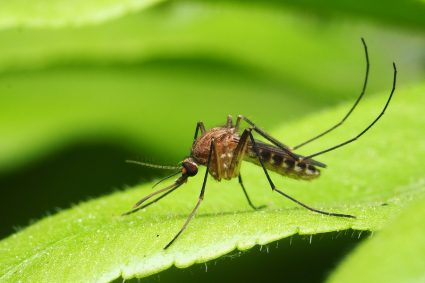
Goose bites are a common occurrence, especially in areas where these birds are found in abundance. Though not typically severe, it’s important to understand what they look like, how they can be treated, and the potential complications that can arise from them.
A goose bite can cause immediate pain, scratches, and bruises due to the serrated edges on the bird’s beak and tongue. It may break the skin, causing bleeding and swelling, and can potentially lead to infection if not properly cleaned and treated. Unlike bites from animals with true teeth, a goose bite is less severe and does not leave a distinctive pattern or mark.
Immediate Signs of a Goose Bite
The immediate signs of a goose bite may include pain, scratches, and bruises. This is due to the sharp structures, or tomia, on the bird’s bill and tongue. The degree of pain can vary depending on individual pain tolerance and the severity of the bite.
Geese also have powerful wings that they can use to strike, potentially causing more significant injuries such as broken bones or cuts that may require stitches. If you are bitten by a goose, it’s essential to clean the wound thoroughly with soap and water and seek medical attention if necessary. Infections from goose bites are rare but possible due to the presence of bacteria.
Visual Differences from Other Animal Bites
Goose bites differ visually from other animal bites mainly due to the absence of true teeth in geese. Instead, they have serrated edges on their tongue and beak, which can cause a painful bite. Goose bites can break the skin, cause bruising, bleeding, and swelling. However, they are generally less severe than bites from animals with true teeth, such as dogs or wolves, which have long canines capable of causing deep puncture wounds.
Potential Allergic Reactions and Infections
Goose bites do not commonly cause allergic reactions, but they can potentially cause infections. Geese can carry several types of bacteria, such as chlamydiosis, e-coli, listeria, pasteurella multocida, and salmonella, which can be transmitted to humans through their bites. If you are bitten by a goose, it is important to clean the wound thoroughly with soap and water and seek medical attention if necessary.
Potential Complications from Goose Bites
Goose bites can lead to various complications, ranging from minor injuries to more severe consequences. Potential complications from a goose bite include minor injuries like bruises, scratches, and puncture wounds, infections, broken bones, emotional distress, allergic reactions, and disease transmission.
Evolution of a Goose Bite
A goose bite typically evolves in several stages in terms of appearance. Initially, the bite may cause minor bleeding, redness, and swelling. Over time, the redness and swelling may subside if the wound is kept clean and free from infection. However, if the wound becomes infected, it may become hot, swollen, and painful, with redness or darkness around the surrounding skin. In some cases, fluid may leak from the bite, and it may develop an unpleasant smell.
Identifying a Well-Healing Goose Bite
A goose bite that is healing well should show a gradual reduction in redness, swelling, and pain. On the other hand, a bite that is not healing well may exhibit signs of infection. Symptoms of an infected bite include increased redness, swelling, and pain around the wound, as well as the presence of pus or fluid drainage.
Distinctive Marks or Patterns
There isn’t a specific pattern or mark that can help identify a bite as being from a goose. However, geese do have tooth-like ridges (serrated) of cartilage on their bills, which can help them pull up roots and vegetation. Goose bites can break the skin and cause bruising, bleeding, and swelling.
Goose Bites and Scarring
Goose bites can leave scars, although it is not very common. Goose bites are usually painful and can leave bruises. In some cases, a goose bite might break the skin, which can lead to infection and scarring if not treated properly. Scars from animal bites, including goose bites, can vary in appearance depending on the severity of the bite, the individual’s skin type, and how well the wound heals.
Treating a Goose Bite
To treat a goose bite, wash the wound with soap and water under pressure from a faucet for at least 5 minutes. Apply direct pressure with a clean, dry cloth to stop any bleeding. Dry the wound and cover it with a clean dressing or plaster. Apply an antibiotic cream or ointment to the wound. Take painkillers, such as paracetamol or ibuprofen, if you’re in pain. Seek medical advice if the bite has broken the skin, is deep or punctured, or if you’re unsure about the severity of the wound.
Conclusion
Goose bites, while not typically severe, should be taken seriously. It’s important to clean and monitor the wound for signs of infection. If any complications arise, seek medical attention immediately. By understanding what a goose bite looks like, how it should be treated, and what potential complications can arise, you can ensure you’re prepared should you or someone you know be bitten by a goose.
Frequently Asked Questions
Can geese bites be fatal?
While geese bites can cause pain and potential complications such as infections, they are generally not fatal. However, any complications arising from a bite, such as infection or disease transmission, should be promptly addressed by a healthcare professional.
Do geese carry rabies?
No, birds, including geese, cannot contract or carry the rabies virus. The primary carriers of rabies are mammals, particularly bats, raccoons, skunks, and foxes.
How can I prevent a goose from biting?
The best way to avoid a goose bite is to keep a safe distance from the bird, particularly during their breeding season when they can be more aggressive. Do not feed or try to touch geese, as this can provoke them.
What is the healing time for a goose bite?
The healing time for a goose bite can vary depending on the severity of the bite and the individual’s overall health. Minor bites may heal within a week or two, while more severe bites or those that become infected may take longer.
Is it necessary to get a tetanus shot after a goose bite?
A tetanus shot may be recommended if the bite is deep, if it punctures the skin, or if the individual’s tetanus vaccinations are not up-to-date. It’s best to consult with a healthcare professional to determine the appropriate course of action.









